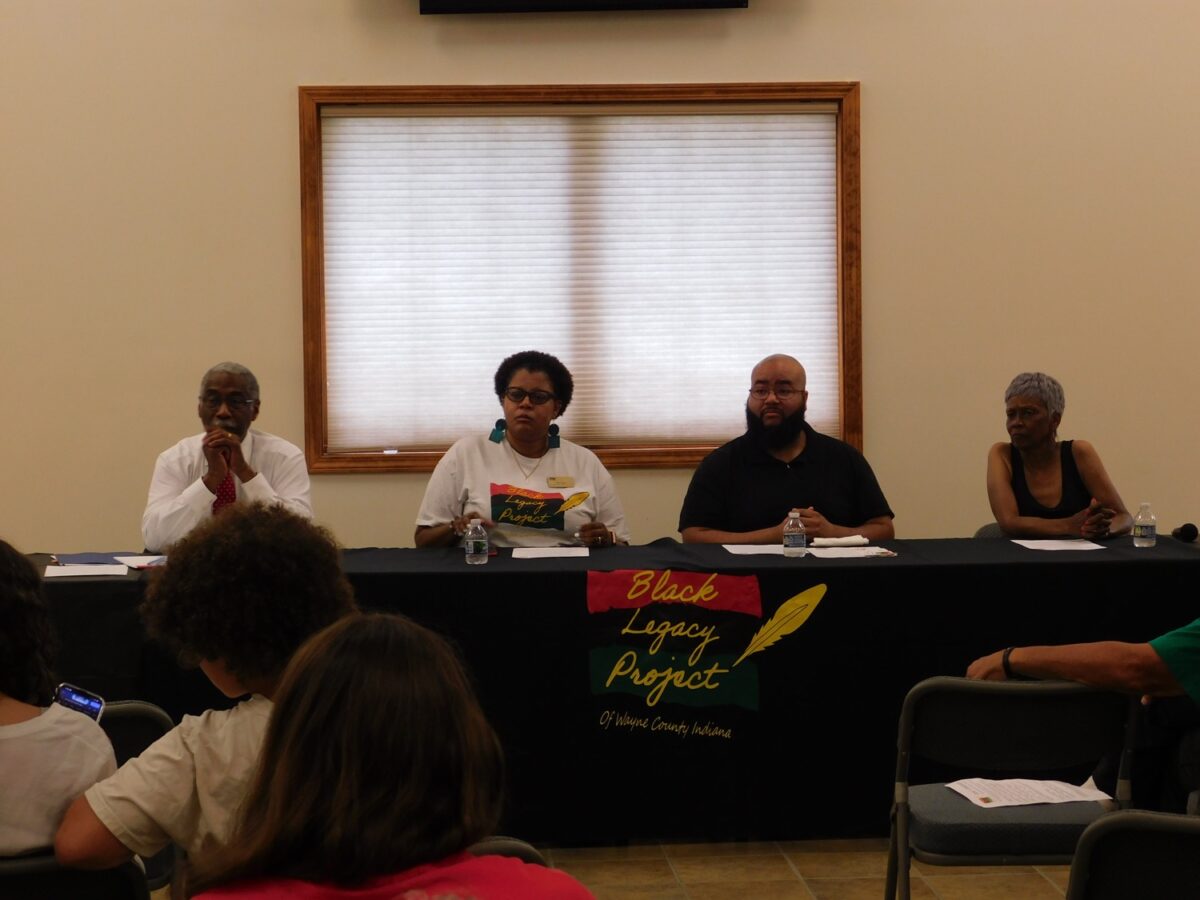An exhibit focused on celebrating local Black history and excellence through the decades will be on display for a few more weeks.
Those attending a recent Black Legacy Project of Wayne County panel discussion at Wayne County Historical Museum in Richmond expressed joy when learning the exhibit would remain open through July instead of closing in June.
The museum’s next big exhibit, which opens in September, is focused on local first responders. Staff will incorporate Black Legacy’s current photos and memorabilia celebrating pioneering public safety workers as well as some still in their roles today.
Panelists Sheila Armstead, Gene Hambrick, Morgan Mack and Tiffany Walker, assisted by moderator Kelley Cruse-Nicholson, reflected on Black Legacy Project’s efforts and how the community can help keep those stories circulating in the community. They’re focused on including more Black history in local history, not excluding other history.
Organizers said they hope that the “Our Legacy: 1800 and Beyond” exhibit gives kids of the community a sense of pride about prior generations’ contributions, and by seeing people pictured who look like them, they are inspired to become something or do something.
Although some of the contemporary faces pictured might be familiar to many local residents, knowledge of other contributions in business, civil rights, education, industry, music and sports might have faded over time. For instance, some were surprised to discover in the exhibit that Richmond had a Black female police officer years ago.
Founder Marlene Lindsey has been spearheading the Black Legacy Project efforts and is growing a committee of Black and white volunteers who are finding new ways to spotlight Black history.
Lindsey and other Black community leaders such as Aaron Stevens, Lucinda Wright and Cruse-Nicholson were interviewed for the “Now Entering … Richmond” documentary on local history that aired in early June on Ball State PBS.
To keep the exhibit’s momentum going, some goals include creating a website containing information and photos to help all ages learn more.
Hambrick, Earlham College’s senior executive director of its Center for Entrepreneurship, Innovation and Creativity and executive in residence, said developing a game intended for high school students is doable too. As time permits, he’s willing to help guide residents who have an idea like Lindsey’s come to fruition.
They’d also like to find other prominent locations in the community for portions or all of the displays.
Hambrick said it was amazing to watch residents walk through the display and find themselves or family members spotlighted, and Wright said the history became more relatable for her children when they recognized people they knew.
Many Black children learned about local Black history through their church in years past, but not all of today’s kids have that experience, and all the contributions aren’t learned in school.
Armstead, a retired social work faculty member at Indiana University East, said it’s “up to us” to carry the exhibit’s message forward.
“We need to teach our own children what we’ve done,” Armstead said. She’s hopeful that local youth organizations will help share that information as well.
Walker, a registered nurse, said it’s important to make the stories accessible to today’s youth. “Don’t preach at them — we have to make it relatable,” Walker said.
Beyond working with school and after-school organizations, Walker said it’s important to strengthen connections with other nonprofits, increase communication about events, and avoid scheduling multiple events especially of interest to Black residents on the same day.
“We need to support each other as a county more,” she said.
Mack, who teaches social studies in Fayette County, said the exhibit has inspired him to work with his students to uncover their own legacies and build relationships. He said social media is a great way to reach people, and educators have a lot of opportunities to build relationships with their students, too. He said he learned the sacrifices, joy and pain of being Black from his own family and believes youth should not just hear about oppression but positives too.
Lindsey worked to build trust with members of the Black community to lend their memorabilia for the display. Museum officials said they want Black residents to know they want to showcase their legacies and incorporate their history into themed displays such as wedding dresses. They hope this exhibit has increased Black families’ comfort in sharing artifacts and stories with the museum for potential inclusion in its permanent collection.
Sponsors for the project include National Endowment for the Humanities, Indiana Humanities and Wayne County Historical Museum.
A version of this article appeared in the June 19 2024 print edition of the Western Wayne News.

